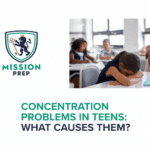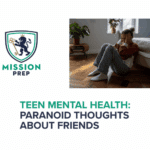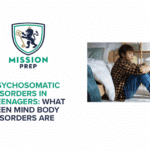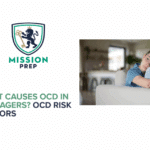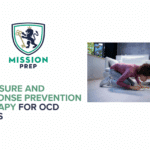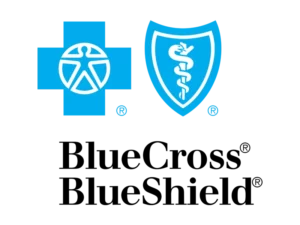School and Friendship-Related All-or-Nothing Thinking in Teens

When we are processing the world around us, our minds don’t always interpret it accurately. Sometimes our thoughts become biased in a negative direction, and this can lead to stronger, more distressing emotions.1-3 These inaccurate patterns of thinking are called cognitive distortions, and they show up often during adolescence.
Cognitive distortions in youth tend to occur in school settings or in situations with friends, and can lead to problems in relationships and various mental health challenges.1-3
There are many different types of cognitive distortions, but one that is especially common in teenagers is all-or-nothing or black and white thinking. This page explores the ins and outs of the black and white thinking teens can experience, as well as how it can affect school and friendships. It covers:
- Types of cognitive distortions in youth
- What black and white thinking in teens looks like
- The risks of emotional reasoning in teens
- Therapy options for cognitive distortions
- Where to find help for anxious teens

The Types of Cognitive Distortions in Youth
Originally, researchers identified six cognitive errors, but over the years, the list has expanded to include more.1 Researchers also use different terms and frameworks when describing specific cognitive distortions, which is why the labels aren’t always consistent across studies.1
Below are several of the most common cognitive distortions in youth, and how they typically appear in adolescence:
All-or-Nothing Thinking
By categorizing everything as a “threat” or “not a threat,” adolescents can make very quick judgments about difficult situations. The problem is that this fast response often prevents them from taking in all the relevant information needed to make a good decision. For example, a teen may fail to recognize that a situation has both positive and negative aspects, and instead sees it as entirely “good” or “bad.”1,2
Discounting the Positive
When adolescents struggle to recognize their positive traits, it is known as “discounting the positive.” Although it can resemble modesty, this cognitive distortion goes much further and can lead to low self-esteem and negative self-perceptions.1,2
Emotional Reasoning
Emotional reasoning occurs when teens rely on strong feelings rather than facts to make important decisions. This can cause problems when they misread social cues or judge interactions with their friends based entirely on emotions.1,2
Jumping to Conclusions
Also known as “arbitrary inference,” jumping to conclusions involves making rapid judgments to avoid potential danger. While this can be beneficial when someone is actually in a dangerous situation, it becomes problematic when used too often, because teens aren’t able to process all of the available information. This is similar to all-or-nothing thinking.1,2
Labeling
Labeling happens when a teen turns a single negative event or experience into a fixed identity. For example, if a teen makes a mistake in front of their friends, they may label themselves as the “odd one out” or “not likable.”2 This can cause peer relationship problems in teens and deter them from future social engagement.
Comparisons
Teens may compare themselves to others in ways that feel factual but aren’t fully accurate. These can be either positive or negative comparisons, but either distortion can damage self-esteem and lead to unrealistic standards.1
Perfectionism
Perfectionism develops when teens set extremely high expectations without considering whether those standards are realistic. Perfectionism is associated with dysfunctional attitudes and several mental health problems in adolescents.1,3
Now that we have identified the major types of cognitive distortions in youth, we will focus more closely on two of the most problematic.
Black and White Thinking in Teens
The black and white thinking teens sometimes experience is something that everyone does occasionally, but when it becomes extreme, it can contribute to mental health difficulties in teens. For example, black and white thinking is linked to personality disorders, eating disorders, aggression, and narcissism.4 It is also closely tied to perfectionism in teens.5
There are several ways to measure dichotomous, or all-or-nothing thinking, and one of the most widely used tools in recent research is the Dichotomous Thinking Inventory (DTI).5
Below are a few sample items on the DTI that show how this cognitive distortion often appears in adolescents:
- “I want to clarify whether things are “good” or “bad.””
- “There are only “winners” and “losers” in this world.”
- “Information should be defined as either true or false.”
- “All questions have either a right answer or a wrong answer.”
- “I prefer to classify information as being useful or useless for me.”
Researchers generally describe black and white thinking as having three components:5
- Preference for dichotomy
- Dichotomous belief
- Profit-and-loss thinking
These patterns often appear in adolescents, especially in academic and social settings.
For example, a teen might believe that all friends are either “good” or “bad,” or that they are either a “success” or a “failure” based on a single test grade. School stress and mental health in teens often become more complicated with this type of rigid thinking.
Emotional Reasoning in Teens
As mentioned, emotional reasoning happens when adolescents rely on subjective feelings rather than objective facts to form conclusions.6 This can include beliefs about themselves, such as whether they are a “good” or “bad” person, or judgments about the world in general.6
Emotional reasoning is common in children, but once they reach the ages of 10-13, this tendency should start to fade.8
Emotional reasoning is strongly tied to negative psychological outcomes in teens. For example, studies have linked it to several anxiety disorders in teens, including panic disorder, social anxiety disorder, posttraumatic stress disorder (PTSD), generalized anxiety disorder (GAD), and obsessive-compulsive disorder (OCD).6-8 Additionally, emotional reasoning is also associated with higher levels of depression in adolescents.6,8
Notably, research found that the adolescents who use emotional reasoning tend to interpret safe situations as threatening. In other words, they sense a danger where there is none, and this can create a vicious cycle that reinforces their anxiety. In OCD, emotional reasoning helps explain how maladaptive beliefs become locked in.9 One term used to describe this is “mood as input”, meaning that when adolescents with OCD experience a negative emotion, it triggers compulsive behaviors such as checking.9
In mood disorders such as depression, emotional reasoning often occurs when teens use their negative feelings to validate distorted thoughts.10 The term that some researchers use to describe this is “affect-as-information.”10 This creates a cycle of increasingly unrealistic standards, making failure more likely, and worsening depressive symptoms.10
Evidence shows that black and white thinking, perfectionism, emotional reasoning, and other cognitive distortions are related to mental health problems in teens. So the next step is to explore effective therapy for rigid thinking teens.
Cognitive Behavioral Therapy (CBT) for Teenagers
Cognitive behavioral therapy (CBT) is one of the most well-known treatments for cognitive distortions and rigid thinking in teens. It has also been shown to help with depression, anxiety, and several other mental health problems.11,12
CBT generally follows three core steps:11,12
- Identify the issue or situation that is causing negative emotions and/or negative behaviors
- Challenge and face the problem by using coping skills for teens
- Replace negative behaviors with positive ones, practicing them consistently to prevent falling back into bad habits
Below is a closer look at some of the coping skills involved:
CBT Coping Skills for Teens
Some of the key CBT coping skills for teens include learning to stay present, becoming more aware of emotions, and practicing self-acceptance.11 These can help teens distance themselves from troubling situations so they can look at them more objectively and challenge negative patterns of thinking.11 They also involve looking for alternative solutions to problems, developing effective problem-solving skills, and making decisions based on facts rather than emotion alone.11,12
CBT also focuses on identifying emotions, thoughts, and behaviors, and how they relate to each other.11,12 For example, a teen may learn to identify a black and white thought, recognize how it affects their mood, and then look at how their actions change when they feel upset.
CBT for teenagers with anxiety generally unfolds in three stages:¹¹
- Psychoeducation and setting goals for treatment: This teaches teens about anxiety, symptoms, and how avoidance strengthens the anxiety cycle.
- Exposure and skill-building: This is when teens gradually learn to face feared situations while building effective coping skills
- Relapse prevention: This focuses on practicing the new skills, reinforcing new habits, and continuing to challenge unhelpful thoughts
A central component of CBT for teenagers is cognitive restructuring, which teaches teens to catch distorted thoughts and substitute them with more neutral or positive ones.12,13 Cognitive restructuring promotes better emotional regulation, increases self-efficacy, and can be especially effective at treating social anxiety.13
Overall, CBT is a highly effective treatment for a wide range of mental health concerns in adolescents, and its strategies directly target cognitive distortions in youth.

MissionPrep: Providing Mental Health Support for Teens
If you’ve been searching for “teen counseling near me,” Mission Prep is here to help. We support teens with a wide range of challenges, including cognitive distortions, anxiety, and depression, as well as evidence-based help for perfectionism in teens. Our outpatient therapy programs include CBT groups for teens, and we can also provide residential treatment if extra care is needed.
If your child is experiencing any of the signs of negative thinking patterns in this article, contact us today. We can listen to your situation, answer your questions, and recommend the best treatment to get your child on the path to mental wellness
References
- Roberts, M. B. (2015). Inventory of cognitive distortions: Validation of a measure of cognitive distortions using a community sample. https://digitalcommons.pcom.edu/psychology_dissertations/325
- Covin, R., Dozois, D. J., Ogniewicz, A., & Seeds, P. M. (2011). Measuring cognitive errors: Initial development of the Cognitive Distortions Scale (CDS). International Journal of Cognitive Therapy, 4(3), 297-322. https://doi.org/10.1521/ijct.2011.4.3.297
- Şimşek, O. M., Kocak, O., & Younis, M. Z. (2021). The impact of interpersonal cognitive distortions on satisfaction with life and the mediating role of loneliness. Sustainability, 13(16), 9293. https://doi.org/10.3390/su13169293
- Bonfá‐Araujo, B., Oshio, A., & Hauck‐Filho, N. (2022). Seeing things in black‐and‐white: A scoping review on dichotomous thinking style. Japanese Psychological Research, 64(4), 461-472. https://doi.org/10.1111/jpr.12328
- Oshio, A. (2009). Development and validation of the dichotomous thinking inventory. Social Behavior and Personality: An International Journal, 37(6), 729-741. https://doi.org/10.2224/sbp.2009.37.6.729
- Berle, D., & Moulds, M. L. (2013). Emotional reasoning processes and dysphoric mood: cross-sectional and prospective relationships. PLOS ONE, 8(6), e67359. https://doi.org/10.1371/journal.pone.0067359
- Alkozei, A., Cooper, P. J., & Creswell, C. (2014). Emotional reasoning and anxiety sensitivity: Associations with social anxiety disorder in childhood. Journal of Affective Disorders, 152, 219-228. https://doi.org/10.1016/j.jad.2013.09.014
- Gangemi, A., Mancini, F., & Johnson-Laird, P. N. (2013). Emotion, reasoning, and psychopathology. In P. N. Johnson-Laird (Ed.), Emotion and reasoning (pp. 44–64). MDPI. https://doi.org/10.3390/brainsci11040471
- Van den Hout, M.; Kindt, M.; Luigjes, J.; Marck, C. (2007). Compulsive perseveration: Empirical criticism on the mood-as-input model. Behaviour Research and Therapy, 45(6), 1221–1230. https://doi.org/10.1016/j.brat.2006.09.001
- Scott, W. D., & Cervone, D. (2002). The impact of negative affect on performance standards: Evidence for an affect-as-information mechanism. Cognitive Therapy and Research, 26(1), 19-37. https://doi.org/10.1023/A:1013837520031
- Craciun, B. (2013). The efficiency of applying a cognitive behavioral therapy program in diminishing perfectionism, irrational beliefs and teenagers’ stress. Procedia-Social and Behavioral Sciences, 84, 274-278. https://doi.org/10.1016/j.sbspro.2013.06.550
- Haseeb, M. (2022). The use of cognitive behavioral therapy (CBT) in treating anxiety disorders among adolescents. Archives of Clinical Psychiatry, 49(3). https://doi.org/10.15761/0101-60830000000421
- Takdir, A. M., Darusman, M. R., & Devi, D. F. (2025). Transforming negative thoughts into self-confidence: The impact of cognitive restructuring on adolescents. Journal of Psychological Perspective, 7(1), 19-28. https://doi.org/10.47679/jopp.719982025

